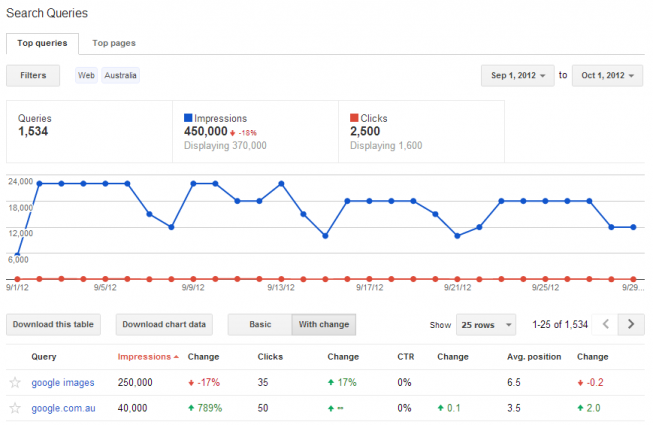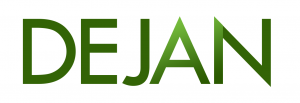Google has finally released their link disavow tool enabling webmasters to report inorganic inbound links for their domains. This document contains a step-by-step guide with screenshots and a list of best practices including potential problems associated with the use of the tool.
[styledbox type=”general” ]Try this tool: Fresh Link Finder [/styledbox]

Download PDF of this guide.
What is the link disavow tool?
The tool allows you to disavow unnatural inbound links for a domain verified in your Google Webmaster Tools. Specifically you can ask Google to ignore links you do not control if you believe they could be harming your website’s rankings.
“If you believe your site’s ranking is being harmed by low-quality links you do not control, you can ask Google not to take them into account when assessing your site.”
What are inorganic links?
Google uses links as one of their ranking signals and they want them to occur naturally. Paid links, link exchanges or other types of link manipulation are considered ‘inorganic’ or ‘unnatural’.
How did I end up with inorganic links?
You may have created some yourself or perhaps your SEO company did. In some cases even third parties can create unnatural links for you. This can happen as part of random spam / content scraping, reputation management spam or deliberate attempt at much debated concept of ‘negative SEO’.
Examples of Inorganic Links
Here are some examples where inorganic links may appear:
- Automated link exchanges
- Low quality article and directory submissions
- Artificial blog networks
- Paid links
- Fake Profiles
- Blog Comment Spam
- Widgetbait Tactics
- Footer Link Spam
- Artificial Blogrolls
The above examples typically exhibit characteristics of manipulative anchor text.
Why use this tool?
There are two reasons why you would use this tool:
1. Preventative
Inorganic links could potentially harm your website’s rankings and by using the link disavow tool you can specify which links should be ignored by Google to prevent any algorithmic or manual action against your website.
2. Remedial
If your website has been affected by a search quality algorithm or manual action you can assist in the repair process by specifying which links Google should ignore.
There are several levels of action Google may take upon noticing search quality issues including:
- Algorithmic Filter (e.g. Panda, Penguin)
- Manual Action (various degrees of severity)
- Domain Ban
For example, Google recently sent out thousands of notifications to webmasters whose websites experienced partial intervention and only very granular action was taken against their content. This could, for example, affect the ability for a single page or phrase to rank in results after ignoring inorganic links pointing towards that page. Finding and disavowing unnatural links for troubled pages could be a good strategy to resolve the issue.
Use With Caution!
Google’s link disavow tool is an advanced feature, recommended for experienced and well-informed webmasters. By removing good links you could impact your website’s ability to rank in Google. If you are certain that the links you are about to disavow are indeed a part of a link scheme and you do not control the links then this tool may be an option for you.
Do I have to use this tool?
No. You have an option to go directly to the source of your bad links and ask for them to be removed. Some links are already ignored by Google and will not affect your website’s rankings. One such example is any link which contains rel=”nofollow”. These will neither help nor harm your website. Another example is various domain information websites such as domain information websites (example: au.similarsites.com/site/dejanmarketing.com) or parked domains.
Google already knows about these websites and deals with them appropriately on an algorithmic level.
Step-by-Step Guide
Google’s link disavow tool works with appropriately formatted text files. The correct format is one URL per line. You can use a .txt file but a .csv will also work fine.
Disavow links from a specific URL
http://bad-link-domain.com/bad-link-page/ – disavows all inbound links coming from that page.
Disavow links from an entire domain
domain:bad-link-domain.com – disavows links from an entire domain.
Commenting
Line starting with a “#” is to be used for comments. Commenting can be useful if you have a large file which may need to be separated into different groups of links for easier overview and updates.
Here’s an example:
#Blog Comment Spam (ignoring the offending pages)
bad-link-domain.com/bad-link-page-1/
bad-link-domain.com/bad-link-page-2/
bad-link-domain.com/bad-link-page-3/
bad-link-domain.com/bad-link-page-4/
#Article Spam (Ignoring the entire domain)
domain:another-bad-link-domain.com
Once you’re happy with your list navigate to the following URL: https://www.google.com/webmasters/tools/disavow–links–main
You will be given an option to select any of the websites verified in your Google Webmaster Tools:

Select the appropriate website and hit the “Disavow Links” button. The next screen will display the selected website in the drop down and show the following warning:

“This is an advanced feature and should only be used with caution. If used incorrectly, this feature can potentially harm your site’s performance in Google’s search results. We recommend that you only disavow backlinks if you believe you have a considerable number of spammy, artificial, or low-quality links pointing to your site, and if you are confident that the links are causing issues for you.”
If you’ve selected the wrong domain, you can adjust it by selecting the correct one in the domain drop down. Click on “Disavow Links” button and a pop-up screen will open up. You will be asked to choose a file containing your disavow list.

Select the file you’ve prepared earlier and hit the “Submit” button. If the file uploads successfully it will be visible on the same screen:

There is nothing else you need to do at this point and it’s safe to close the screen.
Updating and Deleting Your Disavow List
You cannot, upload more than one file, but you can update the existing file. To do so you’re able to download the existing disavow file, edit it and re-upload using the same process. Google offers two download options: CSV and Google Docs / Google Drive.

Note: At this stage Google Docs export option removes any # comment lines.
When you upload a new file, the old one will be overwritten so ensure you include all your links in there and not just the ones you’re adding to the list. If you change your mind about links you wish to disavow or wish to start with a completely new file you always have an option to delete the file and start over.
Pro Tips
Here are a few little known facts and tips which may assist in your link cleanup process and save you valuable time:
Nofollow Links
Nofollow links cannot help your rank nor can they harm your website.
Smart Link Analysis
When looking for bad inbound links which may be harming your website it’s good enough to use the link export from Google Webmaster Tools. You don’t have to spend money on fancy link analysis tools. These will often produce links Google didn’t include in their list and give you more noise to deal with. Be smart and work with Google’s tools directly to save time and money.
Detecting Affected Pages
Sometimes Google will take action against certain pages or phrases rather than the entire website. To find out which of your pages could be in trouble use Google Webmaster Tools to discover any phrases or pages which have experienced traffic or ranking drop in recent time:

Just ensure you have set your filters correctly to prevent any false alerts. For example if you’re targeting audience in Australia then set your location to “Australia” to get more realistic ranking data. Similarly you can detect pages which may have lost traffic/position by navigating to the “Top Pages” tab on the same screen.
Unusual Link Quantities
Your website’s content will have a usual link growth pattern and most of your pages will have a balanced number of inbound links. For various reasons, spammers may target some of your regular pages and create unnatural links for them by spamming other websites.
One such example is online reputation management spam with the intention to lift a page on your website in rankings on the basis that it mentions a brand which is trying to bury any bad references in search results.
Another example includes a scenario where spammers manage to insert a link into your content, either by hacking your site or through UGC (user generated content) such as comments and fake user profiles. This is especially problematic if you do not use rel=”nofollow” on untrusted UGC.
There is an easy way to detect such pages in Google Webmaster Tools. Navigate to: Traffic > Links to Your Site and sort the results by “Source domains”. Observe the link quantities and if you notice a page with an unusual number of linking domains investigate it, especially if the page seems pretty ordinary and normally wouldn’t have that many more links than other average page on your website. Click on the page in the list and if you notice unusual domains linking in, click through further to reveal actual pages and investigate the links. If they seem like spam then they might be worth including in the disavow list.
First published on 17 Oct 2012.
Discussion
Helpful Resources:
– Link Disavow Tool: https://www.google.com/webmasters/tools/disavow-links-main
– Download PDF of this guide.
– Try Fresh Link Finder for detection of recent link on your domain.
Dan Petrovic, the managing director of DEJAN, is Australia’s best-known name in the field of search engine optimisation. Dan is a web author, innovator and a highly regarded search industry event speaker.
ORCID iD: https://orcid.org/0000-0002-6886-3211

I think this is great tool and now its easy to webmasters to get their websites ranking back which are effected from Google penguin update,,
Thank you very much Dan!
It seems that you are the first person to test & write about the disavow link from google. Finally, google listened to our yelling & in the end launched the disavow link but the credit must be given to bing for developing it before google.
Will be eagerly waiting for the post from your or either from the SEO community regarding the effect of removing bad links on the site.
Hi Dan,
You missed a very important section of your article which is Why You Shouldn’t Use This Tool.
I can already see that forums are buzzing with news of the tool as people race to use it but this is actually something that is going to do more harm to the SEO community than good.
My post goes into a lot more detail http://www.matthewwoodward.co.uk/tips/why-google-disavow-is-bad-news-for-seo/ but in essence this is just a super snitch tool.
Google’s algorithyms are incapable of accurately diagnosing link spam so now they have enlisted webmasters all around the world to do the donkey work for them.
Smart move if your Google, not so much if your an SEO.
Great article and hangout!
Personalty I wouldn’t suggest to send and try to disavow links if you never got any message from Google of having unnatural links. Why would you then tell them that you have such links?
The SEO never die, and continue exist as long as there exist google. And if the position taken from another search engine will do SEO for her. 🙂
Thanks for sharing .Very informative..
Hi Dan,
Just noticed that you have uploaded a CSV file in the Disaow link option. But I think it should be a .txt file as illustrated in the image – https://dejanmarketing.com/wp-content/uploads/2012/10/image02.png
Please confirm.
regards
Deb Dulal Dey
Hi Dan,
As you mentioned adding rel=”nofollow” tag won’t help and won’t harm your website. If i get a backlink from porn sites with Nofollo Tag, Will it hurt my search engine reputation?
Need Your Answer
Dan, love your youtube videos and THANK YOU for such an amazing job of making and sharing this guide. We have spent too much time & money combing through i don’t know how many thousands of links from google webmaster tools & majesticseo for 6 Client sites that got pooched. (Can you recommend a tool that gets ALL the external backlinks pointing to a site?? Cause google webmaster sucks for this- no anchor text info and partial URL lists.)
We are about to compile text files for disavow tool. Agree with Matthew Woodward’s comments below. This is BS. Spanking people by putting on ranking impairing penalty and forcing people to waste time and money to manually check every freakin’ link or start new domains.
Then giving them the end results of all this work and then ‘snitching’ as Matt says on all these sites for hopes that Mighty Google will stop spanking us, forgive and allow us to climb out of ranking purgatory so we don’t waste any new quality links on sites that won’t recover without doing this. Thank you!
Hi Dan, I like your comment “You don’t have to spend money on fancy link analysis tools.”. I’ve been using all manner of tools which can be useful if data is aggregated and I have hours to pour over the results. I knew my site had been hit with a penalty for one main term and simply wasn’t ranking at all. I haven’t been doing anything spammy, really, over the years but knew some directory or blog other was having a bad effect. Using the tools out there it would have been easy to come up with a massive list of potential linking sites I needed to disavow but after reading this and using the download from webmaster tools I spotted the referring domain right away. Cheers, I’ll stick to the basics now – so easy to over-analyse at times!
A couple questions on the disavow tool. if I list a domain to be disavowed, does that apply to sub-domains too? Can I use a wild card such as “domain:*.ru” ? Seems risky, but 90% of the trash referrers are from the .ru domains, and I don’t want any links from .ru
..Doug
Wow, its complete guide on disavow tool Awsome. i have created Disavow Tool File Generator Tool for Windows . its FREE and CLEAN here is the link http://www.thetechaddas.com/2013/08/one-tool-to-disavow-all-bad-links.html
Thanks so much for an informative chapter.